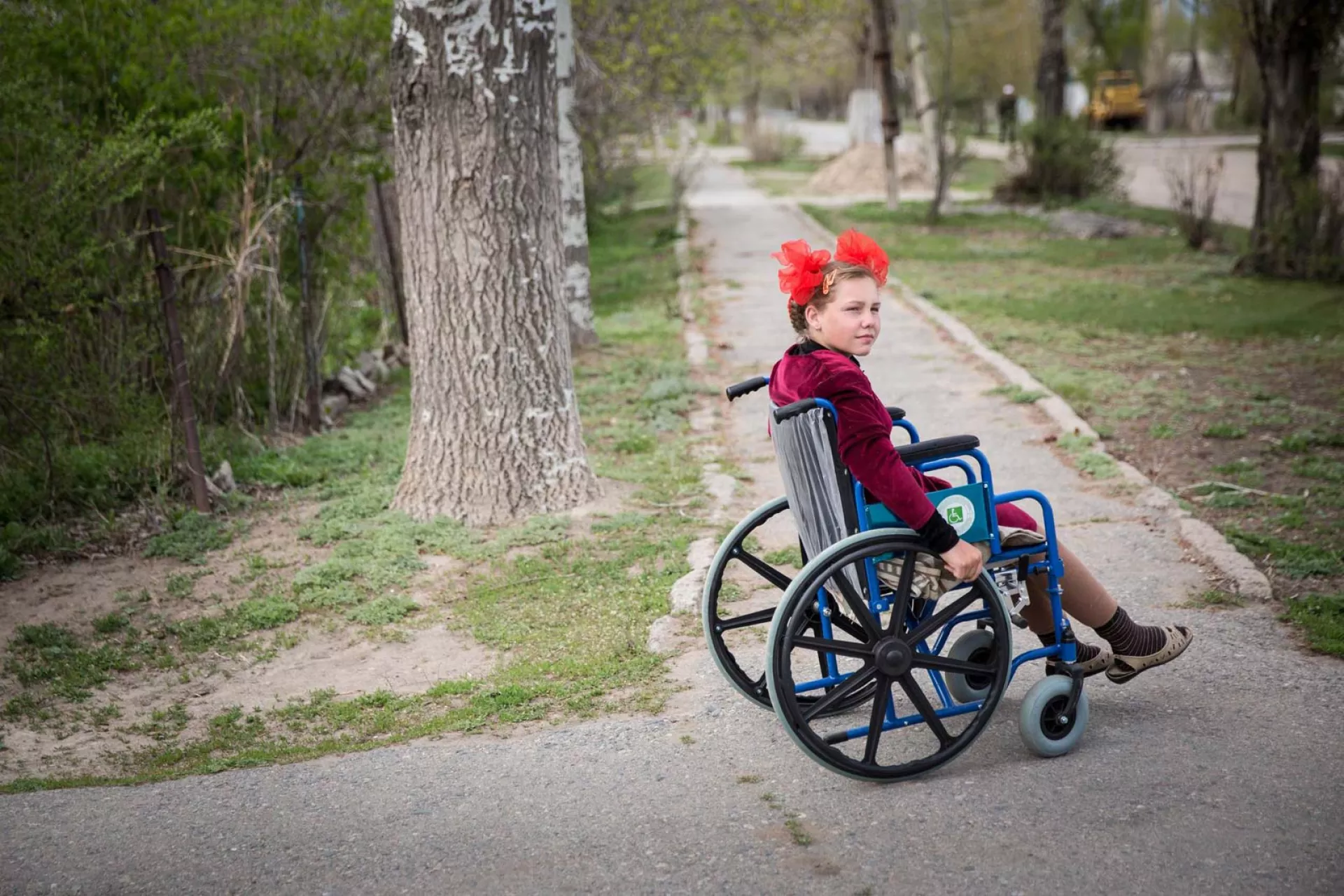Children with disabilities
Children with disabilities are at greater risk to be excluded, and to have poor healthcare, education and social welfare services

Too many children with disabilities in Kyrgyzstan end up in institutions.
In 2016, there were 29,317 children with disabilities registered with the Ministry of Labour and Social Development and receiving state benefits. This number may be higher, as often parents feel societal stigma and don’t reach out for the services that could help. Too many children with disabilities in Kyrgyzstan end up in institutions.
In 2012, there were 3,215 children with disabilities under the age of 18 years living in institutions in Kyrgyzstan, making up 29 per cent of the total number of children in residential care.
Women and girls living with disabilities suffer even more from discrimination, violence, extreme poverty and poor health services, stemming from a combination of factors. In 2012, 10,945 children (43 per cent of registered children with disabilities) were receiving education at specialized schools, home schools and other educational institutions.
Children living with disabilities not only experience limitations deriving from interaction with non-inclusive spaces, but also lack basic services such as education, social protection, health, and rehabilitation services, especially in rural areas. In addition to limited opportunities for children with developmental delays, they are often abandoned, excluded or institutionalized due to widespread stigma. Twenty-nine per cent of all children living in residential institutions have some type of disability.
In 2012, there were 3,215 children under 18 with disabilities living in institutions in Kyrgyzstan. While further analysis into institutionalization of children with disabilities is needed, it is worth noting that family support is limited, and community-based alternative services and inclusive education are underdeveloped.
Too many children with disabilities in Kyrgyzstan end up in institutions.
Stigma and discrimination against children with disabilities is substantial, social infrastructure is inadequate, and capacity of service- providers is poor. These children may be orphaned, or their families may think they are too poor to care for them or unwilling to do so because of the social stigma still attached to disability, or community care or foster care might not be available.
Even hospitals and kindergartens have been known to encourage parents to place children with disabilities in institutions. In many cases, parents believe their children will be better off with specialized care which will help integrate their children into society.
Placing children in institutions has been the norm since Soviet times, but experts question that approach and seeking alternatives. However, social workers and facilities that focus on integration are scarce, and where they do exist, they fill up rapidly – a testament to their success.

The medical model of disability – rather than a social model of inclusion – still prevails in Kyrgyzstan and influences those caring for children with disabilities. Under this person-centered model, the idea of the disability centres on the child and medical interventions to “fix” the impairments, while parents remain passive spectators and the community is not actively involved in removing barriers to inclusion. This model further isolates the child from the community and doesn’t help enhance inclusive learning and design—a process that can enhance any community. Meanwhile, those children that stay at home with their families may receive no education at all.
UNICEF work with the government to transition to a social model of disability, which aims to integrate children with disabilities into society with the help of adapted community care.
Kyrgyzstan is yet to ratify the Convention on the Rights of Persons with Disabilities and lacks the regulatory framework, guidelines, protocols and standards that enable quality services and programmes for families with children with disabilities.
Processes to quickly identify disabilities and address delays in child development will need to be strengthened. Insufficient social protection remains a major problem, due to the lack of people trained to work with children with special needs. Other obstacles include parents’ lack of knowledge and awareness of children’s entitlements, stigma and discrimination, administrative barriers such as documentation requirements, a lack of financial resources, and a lack of effective cross-sectoral coordination and management.





